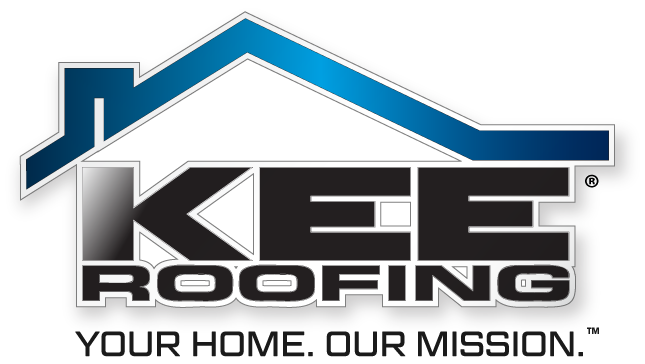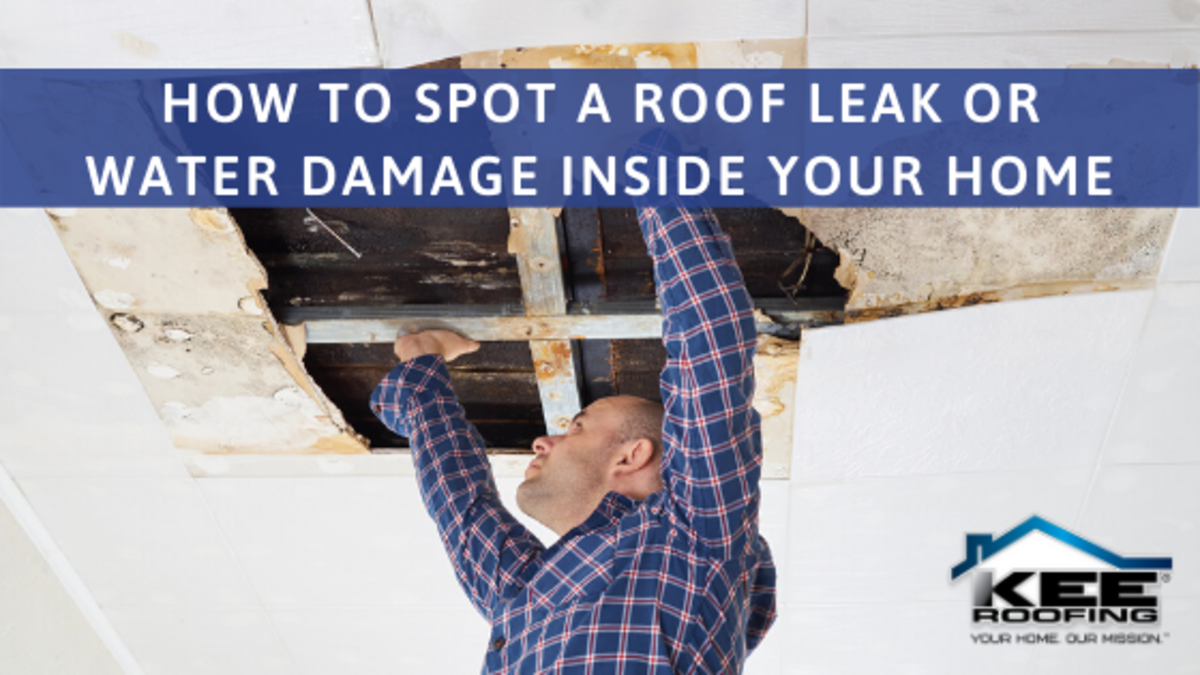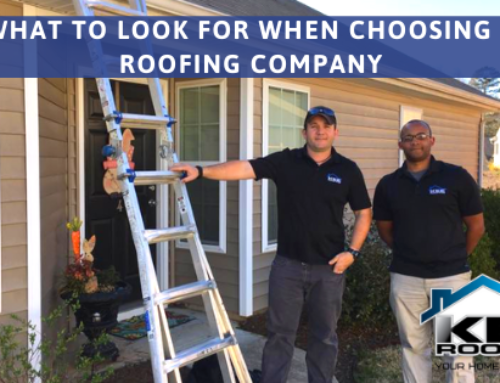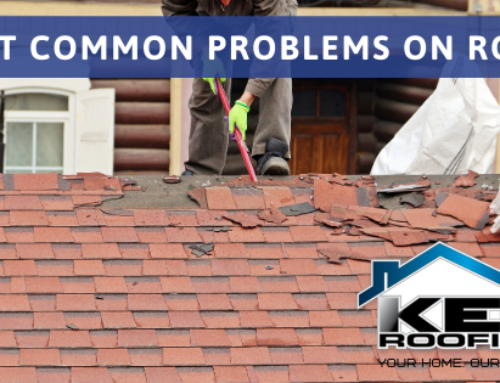Finding out that you have a roof leak is one of the most frustrating feelings for any homeowner. There are many reasons that can cause your roof to leak, but there’s also the possibility that you have moisture or issues with humidity, depending on the weather and climate where you live. Here’s a list of things to look for to determine if you have an active or old roof leak:
- Water stains on your ceiling or wall
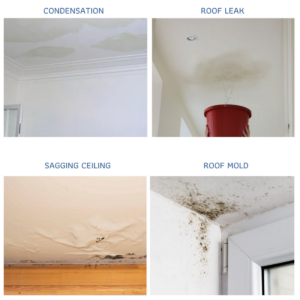
- Paint or wallpaper is bubbling or peeling off
- Discoloration or you see mold starting to form
- Ceilings are sagging
- Wet spots
- Damp odor
Water usually comes into our home through storm damaged or missing shingles, skylights, vents or any spots in which the flashing is poorly secured or missing.
Roof Leak or Condensation
There are a couple of ways to figure out if you have a roof leak or condensation, but the easiest one is taking a look at the location and size of the ceiling stain.
When there’s a mold or condensation issue, you may see a lot of small stains on your ceiling usually they are closer or next to your HVAC vents and are typically dark with a white center.
When there’s a roof leak issue you will typically see just one small or large stain that can be located anywhere in the ceiling, including the exterior walls of your home. In this case, the stain will have the darkest color on the center and will get lighter as it moves across the ceiling. The better indication of how old the stain is will be shown in how dark it has gotten. You will also see multiple rings (similar to the rings in a tree), with different stain color variations. This is an indication that the roof leak has been going on for some time.
If you see any kind of stain on your ceiling don’t hesitate in reaching out to a professional for help. The longer you wait, the more serious the problem could become.
Sagging Ceiling
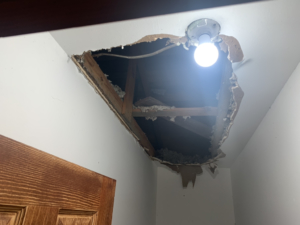 If you have a severe roof leak that’s allowing rainwater into your home, the build-up of water on the ceiling materials will cause it to sag. This is because these materials will break down when the water comes through the outer layer of the roof and accumulates on it. The extra weight of the water and saturation of the materials will cause the ceiling to begin to sag. If this happens, it’s very important to find the source of the water leak and to drain it as soon as possible so that the ceiling does not collapse in, similar to the photo here.
If you have a severe roof leak that’s allowing rainwater into your home, the build-up of water on the ceiling materials will cause it to sag. This is because these materials will break down when the water comes through the outer layer of the roof and accumulates on it. The extra weight of the water and saturation of the materials will cause the ceiling to begin to sag. If this happens, it’s very important to find the source of the water leak and to drain it as soon as possible so that the ceiling does not collapse in, similar to the photo here.
Mold
Mold is usually a very common indication of a condensation issue or a roof leak. During a roof inspection, a professional will inspect the vents and chimney first, because that is normally where the leak begins. One of the usual causes for mold is a leak in the flashing along the walls of the roof.
If you have traditional shingles, once the inspector has confirmed that you have a leak, fixing the problem is an easy process, because the leak normally will be from damaged shingles or tiles, he will simply need to replace these and seal the edges with roofing cement.
Mold can be a serious problem though, since it can cause long-term health problems. This is why you need to take immediate action and call a roofing expert to repair the problem as soon as you notice the above signs of a roof leak, mentioned above.
Overall, there are a lot of causes for roof leaks, most of them can be handled fast if a professional oversees the job. If you want to learn more about spotting leaks or any other problems with your roofing system, call us today at 844-KEE-ROOF or simply fill out the form on this page and we will be in contact you as soon as possible.
Your roof may be leaking because:
- Your shingles have been damaged by squirrels.
- Your shingles have been damaged by storms.
- Your shingles are not properly installed.
- Since damaged shingles are the primary cause of roof leaks, the material your roof is made out of and how well you maintain it can help protect your home against roof leaks. To get your roof repaired, call us today.
If you notice your roof is leaking, you should have it addressed right away. The longer you let the leak go unaddressed will result in damage to the structure of your roof, your home and surrounding shingles. Your ceiling will also begin to show signs of the leak making its way through your roof and into your home. Once your roof leak reaches your ceiling, mold can begin to grow as a result, creating a health risk. To get your leaking roof repaired, contact us today.
If your ceiling is leaking, you can do the following:
- Place a bucket or tarp below the leak.
- Locate the leak and repair it.
- Allow the affected area to dry.
- Fix the affected area of your ceiling.
When it comes to leaks, you may lack the proper tools or knowledge to fix your roof. If that is the case, you should have a roofing contractor repair your roof for you to ensure that it is done properly. To get your roof repaired, give us a call today.
